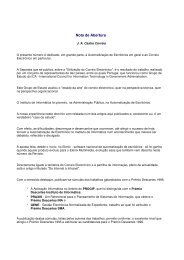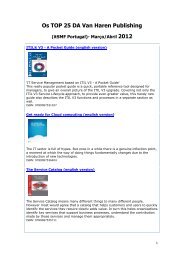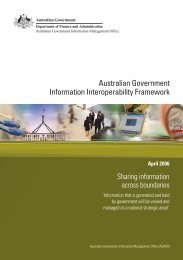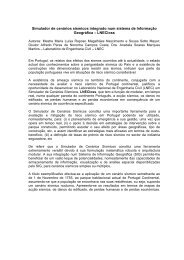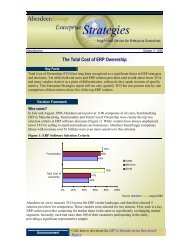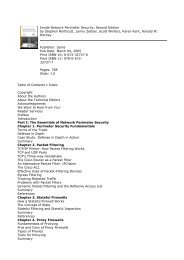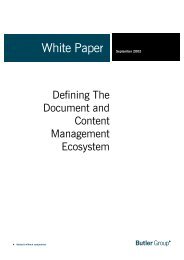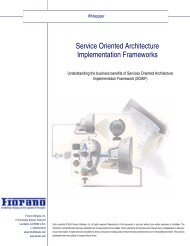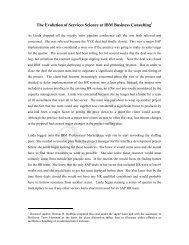OECD Peer Review of E-Government in Denmark - ePractice.eu
OECD Peer Review of E-Government in Denmark - ePractice.eu
OECD Peer Review of E-Government in Denmark - ePractice.eu
You also want an ePaper? Increase the reach of your titles
YUMPU automatically turns print PDFs into web optimized ePapers that Google loves.
While it is vital that the <strong>Government</strong> does not underestimate the costs <strong>of</strong> changes to ICT systems<br />
that will result from the Structural Reform, evidence from a “m<strong>in</strong>i-structural reform” on the island <strong>of</strong><br />
Bornholm <strong>in</strong>dicates that considerable real sav<strong>in</strong>gs are achievable. Given this, what becomes most<br />
important is that Danish regions and municipalities are able to clearly identify net benefits from<br />
<strong>in</strong>vest<strong>in</strong>g <strong>in</strong> an optimal level <strong>of</strong> e-government development. If they cannot, then some worthwhile<br />
e-government <strong>in</strong>itiatives may be slowed or not proceed if they depend on a self-fund<strong>in</strong>g policy.<br />
Top-level responsibility for e-government resides with the Danish M<strong>in</strong>istry <strong>of</strong> F<strong>in</strong>ance, due <strong>in</strong><br />
part to the explicit connection <strong>Denmark</strong> has made between e-government and its programme <strong>of</strong> public<br />
sector modernisation. This responsibility is exercised through a unique set <strong>of</strong> <strong>in</strong>stitutional<br />
arrangements overseen by the Jo<strong>in</strong>t Board <strong>of</strong> e-<strong>Government</strong>. The Board is chaired by the Permanent<br />
Secretary <strong>of</strong> the M<strong>in</strong>istry <strong>of</strong> F<strong>in</strong>ance, with membership from State, regional and municipal<br />
government. The Board leads the national e-government programme, called Project e-<strong>Government</strong>,<br />
which is currently scheduled to run until the end <strong>of</strong> 2006. Delivery <strong>of</strong> the project is the jo<strong>in</strong>t<br />
responsibility <strong>of</strong> the Digital Task Force situated <strong>in</strong> the M<strong>in</strong>istry <strong>of</strong> F<strong>in</strong>ance, and the IT-Policy Centre<br />
<strong>in</strong> the M<strong>in</strong>istry <strong>of</strong> Science, Technology and Innovation (MVTU). Between them, these two<br />
organisations provide a balance <strong>of</strong> public management and ICT expertise to underp<strong>in</strong> the development<br />
and implementation <strong>of</strong> the e-government strategy.<br />
In l<strong>in</strong>e with the decentralised nature <strong>of</strong> Danish government, and the strong autonomy <strong>of</strong> local<br />
government, the Jo<strong>in</strong>t Board does not have any formal powers to decide how, where or when<br />
government organisations (other than those <strong>of</strong> its members) will implement e-government. While this<br />
is consistent with Danish traditions <strong>of</strong> public management, many people <strong>in</strong>terviewed for this review<br />
felt that more mandatory e-government requirements would help achieve even stronger results –<br />
especially <strong>in</strong> relation to adoption <strong>of</strong> the Danish “enterprise architecture” and related technical<br />
standards. <strong>Government</strong>-wide adoption <strong>of</strong> the enterprise architecture and standards for such th<strong>in</strong>gs as<br />
ICT system and data <strong>in</strong>teroperability is now widely acknowledged by <strong>OECD</strong> countries as be<strong>in</strong>g<br />
lead<strong>in</strong>g-edge e-government practice, support<strong>in</strong>g objectives such as <strong>in</strong>creased efficiency, collaborative<br />
services delivery, and <strong>in</strong>creased competitiveness <strong>of</strong> ICT <strong>in</strong>dustries. To achieve a full measure <strong>of</strong> these<br />
benefits, adoption <strong>of</strong> architectures and standards must be as widespread as possible. The question <strong>of</strong><br />
how to respond to this situation is central to the ongo<strong>in</strong>g progress <strong>of</strong> e-government <strong>in</strong> <strong>Denmark</strong>.<br />
Proposals for action<br />
1. The <strong>Government</strong> should note the concerns be<strong>in</strong>g expressed over possible underestimation <strong>of</strong> the costs<br />
<strong>of</strong> change to local government ICT systems that will be required as part <strong>of</strong> implementation <strong>of</strong> the Structural<br />
Reform. Without alter<strong>in</strong>g its policy <strong>of</strong> fund<strong>in</strong>g these costs through realisation <strong>of</strong> efficiency sav<strong>in</strong>gs, the <strong>Government</strong><br />
may wish to closely monitor these costs so that it is better positioned to identify and manage risks to achiev<strong>in</strong>g the<br />
goals <strong>of</strong> the Structural Reform and/or the e-government strategy. Beyond risk management benefits, such<br />
monitor<strong>in</strong>g could develop useful <strong>in</strong>formation and knowledge about the costs <strong>of</strong> public sector ICT that would be <strong>of</strong><br />
ongo<strong>in</strong>g benefit – especially <strong>in</strong> assist<strong>in</strong>g government organisations to identify the costs and benefits <strong>of</strong> <strong>in</strong>vest<strong>in</strong>g <strong>in</strong><br />
e-government.<br />
2. The <strong>Government</strong> could respond to widespread calls, from both with<strong>in</strong> and outside government, to make<br />
certa<strong>in</strong> aspects <strong>of</strong> e-government mandatory by assess<strong>in</strong>g: 1) where, when and how mov<strong>in</strong>g away from the current<br />
approach <strong>of</strong> voluntarism might improve the results be<strong>in</strong>g achieved through e-government; and 2) what risks might<br />
arise from such a shift, both for <strong>in</strong>dividual organisations and government as a whole. Any such assessment could<br />
focus, <strong>in</strong> particular, on issues and options for change <strong>in</strong> the area <strong>of</strong> implementation <strong>of</strong> the Danish enterprise<br />
architecture and related technical standards.<br />
8



